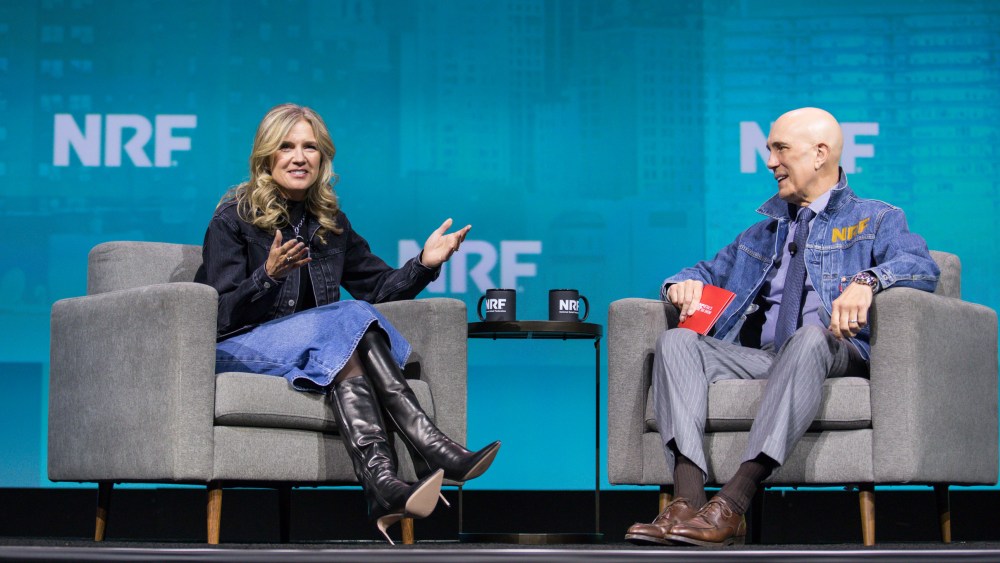More than 40,000 retailers, industry analysts, tech firms, brands and consultants from around the world will descend on Manhattan’s Javits Convention Center beginning Sunday for another “Big Show” — the annual convention and expo staged by the National Retail Federation.
“This is one of the largest shows we’ve ever produced,” said Matthew Shay, president and chief executive officer of the NRF. He’s led the event for 15 years, and said this year’s edition will draw a crowd similar in size to last year’s.
There’s war in the Middle East and Ukraine, political unrest around the world, fires raging in Los Angeles, and heat waves and droughts of increasing intensity. Yet the backdrop for business remains mostly good, particularly after retailers posted midsingle-digit gains for the holiday season, with unemployment low, inflation on general merchandise coming down, and the economy in good shape.
Still, it’s a mix of opportunities and concerns driving retailers to the event. They’re hoping to gain a deeper understandings of how business this year could play out, aware that the gains they saw in 2024 will be tough to match in 2025. They’re hungry to learn more about AI and its applications, and the incoming Trump administration’s potential impact on taxes and tariffs. Last November, the NRF issued a study indicating that President-elect Donald Trump’s tariff proposals could cost Americans $78 billion in annual spending power.
You May Also Like
The agenda for the Big Show — considered the world’s largest retail conclave — is stacked with CEOs scheduled for keynote presentations including John Furner of Walmart U.S. and NRF chairman; Burberry’s Joshua Shulman; Target’s Brian Cornell; Best Buy’s Corie Barry; Bloomingdale’s Olivier Bron; Bluemercury’s Maly Bernstein; Foot Locker’s Mary Dillon; Lululemon’s Calvin McDonald; Sephora North America’s Artemis Patrick, Rent the Runway’s Jennifer Hyman and actress and Pattern Beauty founder and CEO Tracee Ellis Ross. Tommy Hilfiger, Alex Rodriguez and Dylan Lauren are also speaking. All told, there will be 175 sessions.
In the following Q&A, Shay addresses what’s top of mind for the retail industry, the consumer mindset, and what’s to be expected at the Big Show.
WWD: What’s the mood and key industry concerns heading into the convention?
Matthew Shay: There’s a lot of optimism about the state of retail, the state of the economy, and the opportunities for the year ahead. There continues to be enormous innovation in the industry. Consumers are in a good place economically. They’re responsive to the offerings from retailers. As we look ahead, there are some some uncertainties for sure from a policy perspective. But on balance, there’s more enthusiasm about the strength of the economy and the opportunity to grow businesses in this environment. That all combines for a lot of positive energy going into the show.
WWD: What about the possibility of the incoming administration implementing tariffs?
Shay: If we’re talking specifically about the incoming administration, think back to the Tax Cuts and Jobs Act of 2017. That was enormously beneficial for the retail industry. It reduced the corporate tax rate from 35 to 21 percent, unlocked enormous investment and innovation opportunities for retailers and other businesses that have been (taxed) at that 35 percent level. There’s a lot of optimism about the ability to continue to find ways over the next four years to partner with the incoming administration on tax relief, tax reform, regulatory reform, workforce issues. There’s a whole range of things. We don’t know how those issues will turn out. We don’t know where the discussion about trade relationships will go, but we are aligned in seeing opportunities and continue to grow the economy, and we’re going to approach all of this in a spirit of open-mindedness and collaboration.
WWD: But aren’t retailers worried about the possibility of new tariffs?
Shay: That’s one piece of a much bigger picture. The administration hasn’t even come into office yet. So it’s impossible to pre-judge where things will end up, but there is alignment on the desire to continue to attract investment into the United States, to create additional jobs, to see economic growth and activity. We worked very successfully with the Trump administration six, seven, eight years ago, and we anticipate we’ll do that again during this term. We’ve already been engaged in many conversations with the president-elect’s transition team and with congressional leaders, and we’re optimistic about the opportunities.

WWD: So how do the NRF’s lobbying efforts stack up?
Shay: Tax reform, regulatory reform and workforce issues are all at the top of the list [along with] efforts to structure trade relationships that create more balanced and more efficient trade with our partners. Then there are things that are less retail specific, for example, energy production and energy pricing. Any continued improvement in creating a more secure energy future for the U.S. is good for American businesses and especially good for U.S. consumers who have devoted an enormous amount of their disposable income to energy prices. Then there’s the whole issue of housing and the housing market interest rates. Rent and real estate prices have also been a big pressure point for consumers, and so between energy and housing, to the extent those markets continue to improve, that creates a healthier economy, and stronger consumers, and that’s good for retail.
WWD: What’s your read on inflation?
Shay: In general merchandise areas, including apparel, footwear, accessories, we’ve seen deflation of 3, 4, 5 percent depending on the category. Even on the food side, inflation is flat to maybe 1 percent. The inflation that still exists in the economy, what’s driving the 2.6, 2.7 percent inflation, depending upon which measure you look at, is really on the services side, and also rent and housing and various categories of insurance and things like that. It’s not on the goods side.
WWD: What will presentations and conversations center around at the convention?
Shay: Certainly artificial intelligence and the way AI, machine learning, generative AI — all of it — is driving innovation at every level of the retail experience, whether it’s the supply chain, sourcing, product selection, merchandising, inventory management, pricing, marketing, customer engagement. There continues to be a lot of discussion around retailers creating more meaningful experiences for customers. As we came out of the pandemic, it was clear that retailers were getting much more creative and innovative in consumer engagement. Social media, social commerce, digital engagement — that continues to be a critical component in creating meaningful experiences. The growth of the retail industry as a media platform and retail media networks is a huge part of conversation. So is how retail is adjusting for the next generation of consumers and continuing to innovate on issues around sustainability.
WWD: What about retailers evolving websites into marketplaces with broader assortments?
Shay: Retail marketplaces continue to be embraced by consumers, and retailers continue to invest in expanding their marketplaces [to further] one-stop shopping, even if [the item] doesn’t come directly from that retail brand, they’ve got a partnership that can help solve a [need] for a customer. That reflects the the blended nature of the experience and the seamless experience that consumers expect when they visit a retailer, especially on the Internet, their mobile phone or their electronic device.
WWD: Are retailers backing away from DEI?
Shay: No. As the largest private sector employer in the U.S. creating jobs for close to one in three Americans, and more than 50 million going on 60 million jobs, retailers are keenly aware of the advantages of a representative, diverse, talented, multicultural workforce to deliver great experiences for customers. Retail is a great meritocracy. There’s opportunity for everyone. Retailers will continue to be committed to that perspective and create an environment where everyone has an opportunity and everyone belongs based on what they’re interested in. I don’t think anyone is moving away from anything. Various businesses, employers, universities and organizations have explored and experimented with a variety of approaches to talent acquisition and the workforce that was reflective of the external economic environment. People are always making adjustments to their programs based on what’s effective for that particular environment, and that’s always going to change and evolve and grow. But I don’t think that in any way diminishes the commitment to creating opportunities and giving people the chance to take advantage of the wide variety of career paths that exist in the retail industry.



